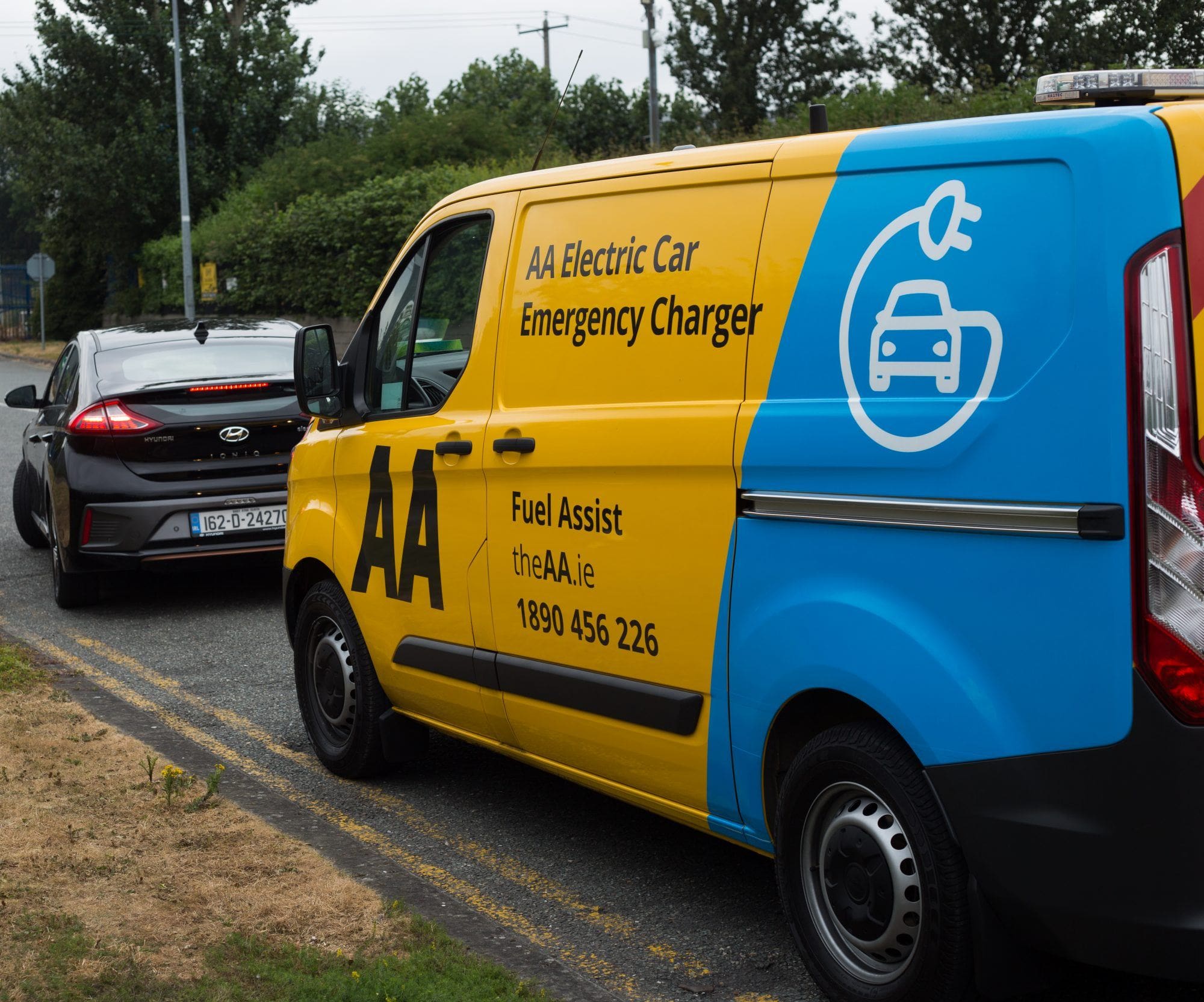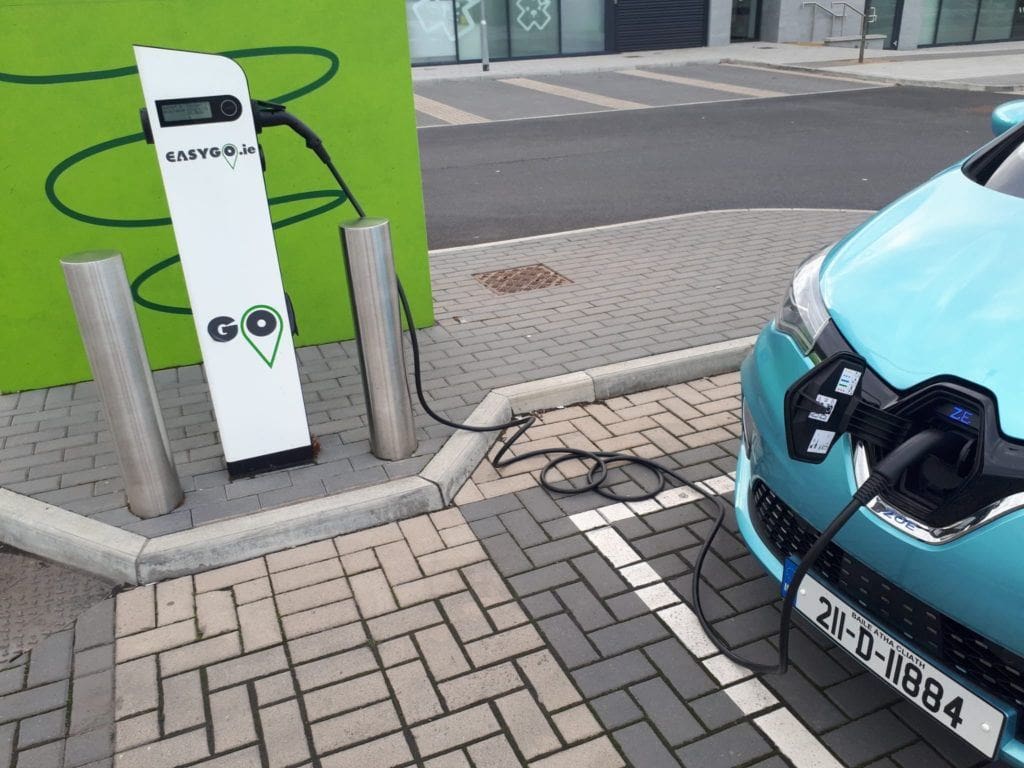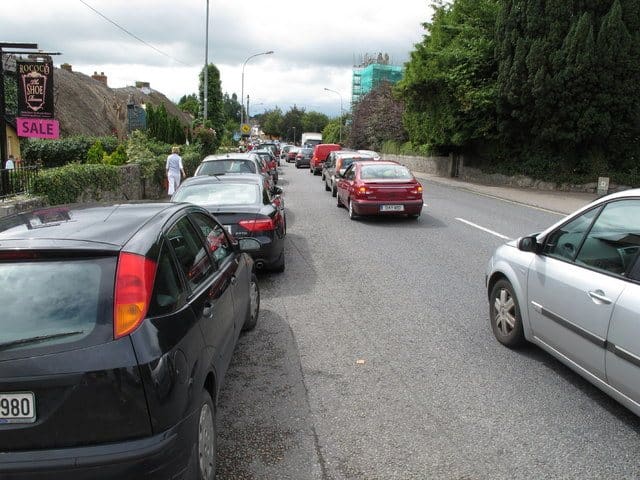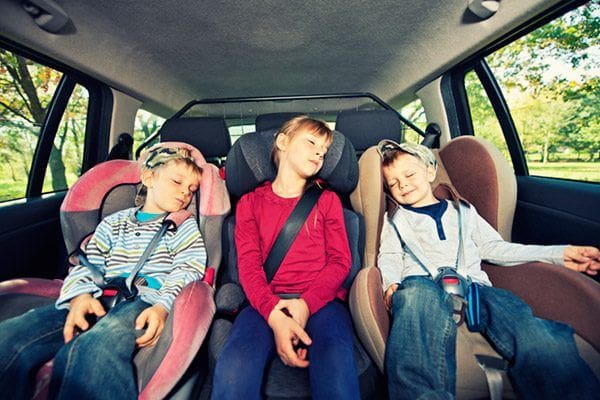Electric vehicles (EVs) have never been more popular in Ireland. Up to the middle of August, 6,449 new fully electric cars have been registered in Ireland in 2021, more than double the number in the same period in 2020 and 2019. That’s along with 2,026 Plug-In Hybrid Electric Vehicles and 15,247 hybrid vehicles . Newly registered BEVs (battery electric vehicle, ie fully electric) now have almost 7% of the market – a low share, but improving all the time.
The Irish government’s Climate Action Plan seeks to have 1 million electric cars on the roads by 2030, and as we all try to reduce our emissions, many of us will be considering the switch to EV soon. But how easy or hard is it to make the change? The AA’s Lauren Beehan swapped her petrol Renault Clio for a fully electric Renault ZOE to find out.
Are electric cars automatic or manual?
This was a double-whammy of firsts for me – first time driving an EV, but also my first time driving an automatic. . As Electric cars don’t stall, all EVs are automatic. Unlike petrol or diesel, they neither need a clutch nor gears. This is because they can achieve much higher revs than a standard fuel engine using a single gear. I was having visions of not being able to get used to it and getting stuck in the car park, or holding up the queue at traffic lights unable to find the right pedal, but the automatic transmission was very easy to drive – much easier than manual. It’s essentially impossible to “conk out” or stall in an automatic car, which means it’s easy to drive and very quick to take off from a stopped position, even on hills. It did take a little while to stop me stamping on my imaginary clutch pedal or grabbing to change a non-existent gear though.
All fully electric vehicles are automatic. The Renault ZOE only has two pedals and a small joystick with 4 modes – Reverse, Neutral and two Driving modes, D for standard driving, and B for regenerative braking. Regenerative braking is a mode whereby the car re-uses some of the energy used in braking to recharge the battery. In practice, that feels like the car starts gently braking by itself once you take your foot off the accelerator pedal (even if you haven’t touched the brake). This takes a little getting used to but is very useful for extending your battery life and being even more economical with your electricity use. It leads to quite a smooth drive overall but can be a little annoying if you just wanted to ease the pedal slightly to stay at a constant speed or are simply adjusting your foot’s position on the pedal.
The ZOE is very smooth and enjoyable to drive – it takes off quite quickly and gets up to speed fairly fast when you accelerate on a straight road/motorway. For me, it was quite easy to get used to because it’s very similar to my own Clio in terms of driving; the driver’s vantage point and blind spots were more or less the same, although this model had useful blind-spot detectors in the wing mirrors. The pressure needed for the brake was very similar to the Clio, though I would say the accelerator pedal in the ZOE felt a bit more sensitive, probably because there’s no balancing with a clutch to find the biting point.
Do electric cars make noise
One thing I definitely had to get used to is the silence – the electric engine doesn’t rev like a combustion one, so at first, I found it hard to tell whether I had actually started the engine or not (or stopped it, once I had parked). And then there’s the humming – there is an EU regulation to fit EVs with an artificial sound so that more vulnerable road users can hear your presence at low speeds. The ZOE emits a ghostly hum or droning noise at speeds under about 30 km/h, making you feel a little like you’re driving into the opening scene of a thriller movie. But you do get used to that, and it is a necessary addition for the safety of others, especially the visually impaired.
Range and battery life of electric cars
Of course, everyone’s big question about EVs is the range: how far you’ll get before you need to charge it, and how long that charging process will take. I was pleasantly surprised by the Renault ZOE’s range – the manufacturer’s notes say its 52 kWh battery could do up to 395km on a full charge, although that is in optimum driving conditions (mild weather) and heavily weighted towards urban and suburban driving (only 18% motorway driving).
I drove around 225km in the week, and that took me from 95% battery to 28%. I felt I was hyper-aware of the range during the week, more so than I would be in a petrol car – constantly checking how much battery I had left and how far that said it would take me, especially once I got below 40%. That said, even at 28%, the dashboard told me I could still do another 98km, so you would easily get over 300km from a full charge. To keep it realistic, I had the air conditioning and radio on for most of my driving time, the lights were on some of the time, and I did a mix of motorway and town driving. I drove in the regenerative braking B mode for most of the week, and there were a few rainy days in there too.
As it’s August, I obviously did not get to test the car in cold weather. I spoke with Simon Acton of the Irish EV Owners Association, to get some insight into ownership. He told me that you can expect your range to drop by maybe 10-15% in winter, but that is partially due to the heating and lights being on more often, something that also affects your average petrol car. Renault’s own notes say you could expect to do around 240km in the ZOE in winter weather, but this could be extended by warming the car before starting. Of course, this also depends on the definition of winter weather, which tends to be less extreme in Ireland than in other parts of Europe.
According to the CSO , the average Irish private car was driven 16,352km in 2019, so that would be 314km per week. I drove less than that, but the ZOE would likely still suit someone doing that distance, maybe with an extra charge in the middle of the week for reassurance.
A common concern people have about EVs is electric car battery lifespan. People think the battery life will degrade as time goes on – I was certainly thinking about my phone battery, for example, that was great when I first got it and now needs charging twice a day. Simon Acton says that’s a common fear, but that EV batteries are more robust than our phones and have an on-board system that actively keeps it working at optimum levels. While battery life does reduce slightly over time, he says “you can expect at least 10 years usable battery […] and battery swaps and battery replacements are going to be coming online too”. Renault guarantees the ZOE’s battery for the first 8 years or 160,000km.
EV Chargers in Ireland
Like when you learn a new word and then hear it everywhere, once you start noticing EV chargers, you spot them everywhere (in urban areas, at least). I kept note of the ones I passed on a day-to-day basis (usually four ESB ones), and generally about half of them were available, with the other half either in use or blocked by a parked car. There was no time while I was driving that I would have found myself stuck if the warning light came on; there was always at least one free within 10km.
Of course, it has to be said that I was driving in the Greater Dublin Area for the week, which is probably the best-served place for chargers in the country. But if you look at the various maps available for EV owners, you can see that most urban areas in the country have some public charging stations. They are a mix of the ESB Networks ones (eCars app), some county council ones built into lamp-posts (including several in Fingal), chargers in some petrol stations including some Circle K branches, and chargers provided in private car parks by businesses for their customers to plug in while they’re shopping or using that business’s service (many of these are on the EasyGo network here). The latter is particularly convenient, allowing you to have the car charging in a place it’s going to be parked for an hour or two anyway. But obviously, you can’t always guarantee that a particular charger will be free when you get there, or that it won’t be blocked by a parked car – you’ll need a backup option, but finding all chargers occupied could be a major inconvenience if you’re planning an hour’s pit-stop to charge up on a long trip.
I only charged the ZOE once, for exactly an hour on a 22kWh charger in a supermarket car park while I was grocery shopping, and that brought it back from 28% to over 70%, giving me a new range of 243km. That charger even turned out to be free, provided by the supermarket to their customers, but most similar chargers will set you back about €4 per 100km. The dashboard info at that point said it would take another hour to get to full charge, although most of the advice I was given said it’s better for the battery’s longevity to stop charging at 80% unless you’re about to make a long journey straight away.
That said, most current EV owners will do their regular charging at home, rather than at a public point. If you have off-road parking at home, you can get a home charger installed (there is currently an SEAI grant of €600 for this) or the ZOE comes with a second cable using a three-pin adapter for a regular socket. I didn’t need to try this during the week, but I am told this is a much slower option; something you might do overnight, especially if you have night-rate electricity at home. Of course, that’s only an option if you have off-road parking at home, and you can access a socket without having to leave your front door open.
What happens when electric car battery dies when you’re out?

I’m told that it’s reasonably difficult to inadvertently run out of battery – the car will start giving you warnings long before you run out, so you’ll have time to find a charger. Our colleagues in AA Rescue tell me it’s reasonably rare to get a call out to an EV with a dead main battery. However, they have portable charger vans that can give your car 10-15km worth of range in 20min, which is the equivalent of adding about a gallon of fuel in a traditional car. AA Rescue tell us it’s actually more common for the 12V accessory battery to go flat – just like petrol vehicles, most EVs also have a standard 12V battery for things like lights, wipers and the audio system, and sometimes people forget that sitting with the engine off and the radio on will deplete the 12V battery (even if the main one still has a lot of power).
AA Rescue say the best thing you can do is make sure you fully understand your new car when you buy it, and read the manual carefully. An EV is different to a traditional car, and there are several ways of unintentionally letting one or other of the batteries deplete, particularly when the car is parked up.
Costs of buying EV
One big consideration when buying an EV is the cost. EVs are generally more expensive to buy (the ZOE starts at €27,550), because they’re more expensive to produce, and you may also need to fork out for a home charger when you get started. But the overall cost of running it is cheaper than running an ICE car – electricity is much cheaper than petrol or diesel, especially if you can charge it at home and have a night rate to do it overnight. I calculated that my Renault Clio cost me around €7.77 per 100km at July’s petrol prices, but charging the ZOE would be around €4 per 100km with a standard public charger and €3.50 at home, but could be as little as €1.87 if my home electricity plan had a night-rate included.
Tax is cheaper, as with no CO2 emissions, it’s in the lowest class (€120 per year, when the Clio would be €270), and you also get half-price tolls. After around 3 years driving, you will have made back the additional cost of purchase, but obviously, it can be difficult to stump up a higher up-front cost.
Overall verdict
My experience was fairly seamless – my initial fears about range, chargers and the fact that it was automatic did not come to pass. The Renault ZOE was really nice to drive, the range was more than enough for my needs, and there were always chargers if I needed them. It has to be said though, that there are a number of factors that made it easy for me to make the switch: I live in the suburbs with lots of amenities within walking distance (shops, medical services, restaurants etc), good public transport connections to the city centre (although poor ones to other suburbs), and I’m currently working from home, so I don’t actually drive a lot by Irish standards. Even pre-pandemic, an average week would only see me drive about 120km, well below the 314km travelled by the average Irish car. As well as that, I live near a number of chargers, and if I was to become an EV owner, I could likely get an EV charger installed at home. If you live in an apartment, or a house without a driveway, you are relying on the public network, which may be difficult, depending on the area.
If you have a very long commute, or an unpredictable driving pattern (travelling to different places for work, or dropping kids here, there and everywhere for matches or other hobbies), then it may be a bit more complicated. Similarly, if you live in a rural area where you rely on your car to access services like shops, medical services and schools, you may drive a lot more and have fewer public chargers for an en-route top-up. That said, having spent a week with the Renault ZOE, I don’t think those are necessarily the barriers to EV ownership that they used to be. If your individual journeys aren’t especially long, the car’s range would easily suit the average driver if they had somewhere to charge it once or twice a week while at home or at work. Other EVs may also have longer ranges again, and they’re getting better all the time.
Of course, all of this means that EVs take more planning than ICE ones, at least while you get used to them. If you’re the type who always fills up the moment your tank drops below half-full, this won’t really be a problem, but if you’re one of those who drive on fumes, you might find yourself in trouble. There’s no such thing as nipping into a garage on the way and filling up – if your EV is near-empty when you get in, you’re going to need to delay your journey for about an hour to charge it up. Simon Acton described it as a “change of mindset” – instead of thinking about fuelling as taking your car somewhere while you’re using it, you think about how you can charge your car when it’s not in use, so it’s ready when you need it.
For more on this topic, check out our videos on Instagram – @theAAie










